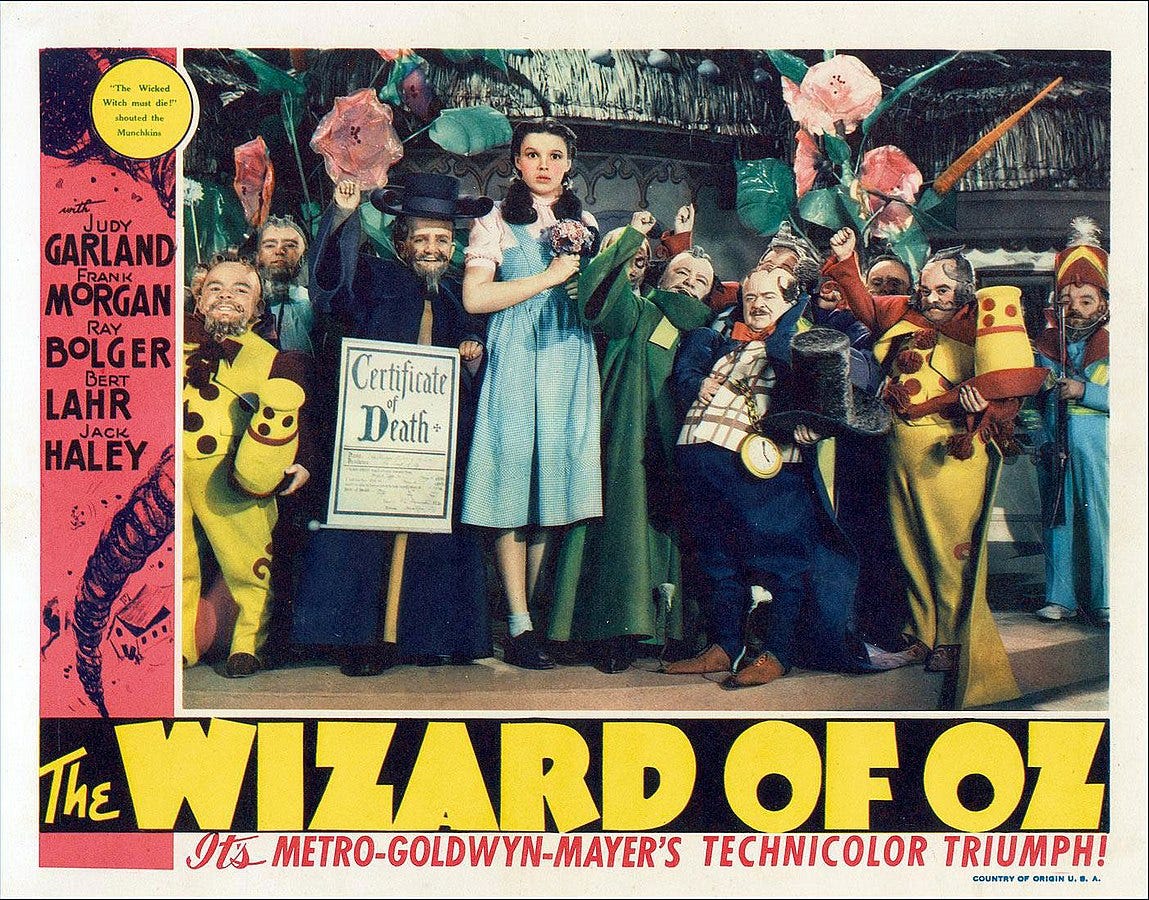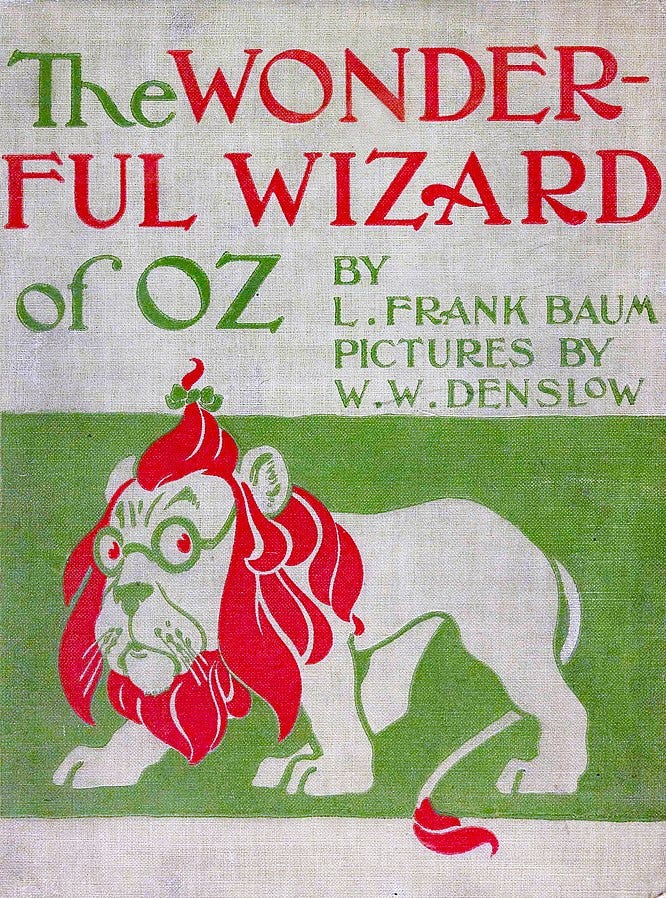Was the "Wizard of Oz" influenced by the 1896 presidential election?
The yellow brick road might have more to do with politics than you imagined

You’ve seen the The Wizard of Oz movie, no doubt. And chances are you’ve also seen the Broadway play Wicked. But did you know the writing of the The Wizard of Oz might originally have been an allegory about the politics of the 1896 presidential election?
Seems impossible, doesn’t it? But if you stay with me for a minute as we look at the story again and lay the politics of the time on top of the narrative, well, things get kind of interesting.
The politics of 1896. Goldbugs and silverites.
Before we revisit the story, it helps to know a tiny bit about the politics of that era. The economy was a huge issue in the 1896 election between William McKinley and William Jennings Bryan. The country had been battling a depression since 1893 and the election was in large part a clash over how to reinvigorate the economy.
But what really got people stirred up was a debate about the gold standard.
You see, the U.S. currency was tied to gold at the time. Among other things, this meant the nation couldn’t increase the amount of money in circulation without also adding to its gold reserves. Supporters of the gold standard believed this helped keep spending and inflation under control.
On the other hand, during an economic downturn this policy constrained the ability of government to stimulate the economy. So opponents were upset because the depression led to a deflationary spiral. Farmers and workers were besieged by low wages and rising debt. Their proposed solution was to tie the currency to both gold and silver (a policy known as bimetallism) in order to inflate the economy and provide economic relief. This was especially popular with an agrarian populist movement in the Midwestern Plains states.
It might be hard to imagine today, but this debate captivated the country. Supporters of the two sides became known as “silverites” and “goldbugs.” The dispute even split both major political parties. Republicans from pro-silver western states, for instance, walked out of their convention when the GOP endorsed the gold standard.
Meanwhile, pro-silver Democrats staged a takeover of their party. They nominated the populist William Jennings Bryan, a 36-year-old former Nebraska Congressman, who riveted convention delegates with his “Cross of Gold” address.
“You shall not press down upon the brow of labor this crown of thorns; you shall not crucify mankind upon a cross of gold!” exclaimed Bryan.
But what, you ask, does any of this have to do with the Wizard of Oz?
The Wizard of Oz

Well, start with the fact that The Wonderful Wizard of Oz — the novel on which the 1939 film was based — was published in 1900, just a few years after the 1896 election. It was written by L. Frank Baum, who spent part of the 1890s as a journalist in South Dakota, one of the Plains states where the populist movement was strong. Another Plains state that was a hotbed of the pro-silver movement was Kansas, home of Dorothy’s character.
Interesting, but still not all that convincing, right? So let’s look at the rest of the story.
If you’ve seen the movie, you know that Dorothy’s house in Kansas was picked up by a cyclone and landed in Oz, where it killed the Wicked Witch of the East. The Good Witch then gave the witch’s slippers to Dorothy, who set off on the yellow brick road to Emerald City to see the wizard. Along the way, she met the scarecrow, tin man, and cowardly lion.
Now, consider that Oz is also an abbreviation for ounce, and the Wicked Witch crushed by Dorothy’s house was from the same region as the bankers who owned the debts that farmers couldn’t pay. The yellow brick road, from this perspective, symbolized the gold standard. It was supposed to take Dorothy to salvation, but only led to disappointment in the Emerald City.
The Emerald City, naturally, was Washington, D.C., where everyone saw through green-colored (or money-colored) glasses. The not-so-all-powerful wizard was the president. The scarecrow and tin man represented struggling farmers and factory workers, and the cowardly lion was Bryan, the presidential candidate who despite being a roaring orator (and having a name that rhymed with lion) was unable to put together the coalition needed to win the election.
The story concluded with Dorothy finding out that her magic slippers had the power to send her home. So here’s the real kicker: Those slippers are red in the movie that we’ve all seen, but they are silver in the book Baum published in 1900. So it’s actually silver that had the power to return Dorothy to safety!
Baum himself never admitted any link between this story and the politics of the 1890s, but some historians now suggest it’s an allegory for the politics of the time. We’ll never know for certain, but it’s intriguing at least to ponder the possible links between this tale and an 1896 election that propelled William McKinley into the White House.
This essay was written for Substack, but parts of it were adapted from my book, Quest for the Presidency: The Storied and Surprising History of Presidential Campaigns in America (Lincoln, Nebraska: Potomac Books/University of Nebraska Press, 2022).
And don’t forget to subscribe to The Riel World if you haven’t done so already.




For some reason, this never came up when we read it in 2nd grade. Cool insights, Bob!